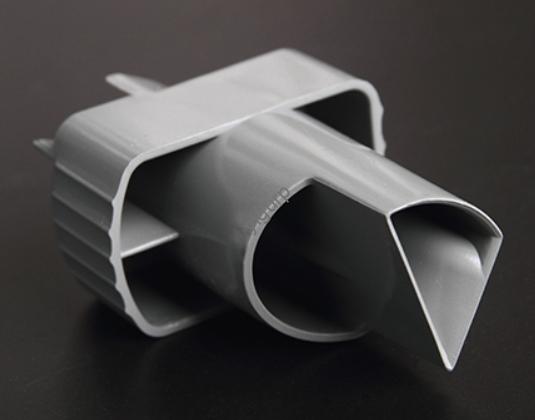Se você é um designer ou fabricante de produtos e deseja criar quadros manuais de impressão 3D precisos para o desenvolvimento de novos produtos, uma das primeiras perguntas que você fará é: “Que materiais devo usar?” Escolher o material certo afeta diretamente a durabilidade do seu handboard, aparência, e se corresponde ao desempenho do seu produto final. Let’s break down the most common 3D printing handboard materials, seus usos, and how to pick the best one for your project.
Common 3D Printing Handboard Materials & Their Key Details
To make it easy for you to compare, we’ve organized the top materials into a clear table. Each entry includes the material name, suitable 3D printing technology, main advantages, and typical handboard applications.
| Tipo de material | Suitable 3D Printing Technology | Principais vantagens | Typical Handboard Applications | Average Cost (Por kg) |
| Plásticos de Engenharia (ABS/PLA) | FDM (Modelagem de Deposição Fundida) | Baixo custo, fácil de imprimir, boa resistência ao impacto (ABS) | Protótipos de produtos de consumo (brinquedos, household goods), structural test parts | \(20 – \)50 |
| Photopolymer Resins | SLA (Estereolitografia)/DLP (Processamento Digital de Luz) | Alto detalhe, smooth surface finish, alta precisão | Protótipos de alta precisão (invólucros eletrônicos, jewelry models), visual display handboards | \(80 – \)150 |
| Rubber-Like Materials | FDM/SLS (Sinterização Seletiva a Laser) | Flexível, elástico, good grip | Handboards for soft parts (punhos, juntas, shoe soles) | \(60 – \)120 |
| Materiais Metálicos (Titanium Alloy/Stainless Steel) | SLM (Fusão seletiva a laser)/SLS | Alta resistência, resistência à corrosão, resistência ao calor | Industrial part prototypes (componentes automotivos, peças aeroespaciais), functional test handboards | \(300 – \)800 |
| Materiais Cerâmicos | SLA/SLS | Resistência a altas temperaturas, alta precisão, apelo estético | Artistic handboards, dental implant models, high-temperature test parts | \(150 – \)300 |
| Materiais Compostos (Carbon Fiber-Reinforced Plastic) | FDM/SLS | Leve, alta resistência, rígido | High-performance handboards (quadros de drones, sports equipment prototypes) | \(100 – \)250 |
| Food Materials (Sugar/Chocolate) | Specialized Food 3D Printers | Edible, customizable shapes | Promotional handboards (food product samples, decorative cake toppers) | \(50 – \)100 |
| Gypsum Materials (Colored) | Jateamento de encadernação | Vibrant colors, easy to shape, baixo custo | Visual display handboards (esculturas, modelos arquitetônicos) | \(30 – \)80 |
| Artificial Bone Powder | SLS/SLM | Biocompatível, matches bone structure | Medical handboards (orthopedic implant prototypes, guias cirúrgicas) | \(500 – \)1,200 |
How to Choose the Right Material for Your 3D Printing Handboard
Picking a material isn’t just about cost—it needs to fit your handboard’s purpose. Aqui estão 4 key factors to consider, with simple questions to guide your decision:
1. What’s the Handboard’s Main Use?
- If it’s for visual display (por exemplo, showing a product’s design to clients), go for resinas fotopoliméricas (superfície lisa) ou colored gypsum (cores vibrantes).
- If it’s for teste funcional (por exemplo, checking if a part can withstand pressure), choose plásticos de engenharia (ABS) ou metal materials (alta resistência).
- If it’s for medical or biocompatible needs (por exemplo, orthopedic prototypes), artificial bone powder is the top choice.
2. What’s Your Budget?
- Budget-friendly options (under $50/kg): PLA (a type of engineering plastic) and gypsum. Great for simple visual handboards.
- Mid-range options (\(50 – \)200/kg): ABS, rubber-like materials, e materiais compósitos. Balanced for most testing and display needs.
- High-end options (over $200/kg): Metais (liga de titânio) and artificial bone powder. For industrial or medical-grade handboards.
3. Do You Need Special Properties?
- Flexibilidade: Rubber-like materials are the only choice for handboards that need to bend (por exemplo, a prototype of a phone case with a soft edge).
- Resistência ao Calor: Ceramic materials or stainless steel work best if your handboard will be exposed to high temperatures (por exemplo, a prototype of a kitchen appliance part).
- Leve & Força: Composite materials like carbon fiber-reinforced plastic are perfect for handboards that need to be strong but not heavy (por exemplo, a drone frame prototype).
Yigu Technology’s View on 3D Printing Handboard Materials
Na tecnologia Yigu, we believe that the right 3D printing handboard material is the bridge between design ideas and market-ready products. Based on our work with hundreds of manufacturing clients, plásticos de engenharia (ABS/PLA) e resinas fotopoliméricas are the most versatile choices for most new product 研发 (R&D) projects—they balance cost, ease of printing, e desempenho. For industrial clients needing high-strength handboards, we recommend carbon fiber composites or stainless steel, as they replicate the durability of final parts. We also see growing demand for biocompatible materials like artificial bone powder in medical R&D, and we’re committed to offering these options to support innovative healthcare solutions.
Perguntas frequentes
Q1: Can I use PLA for functional test handboards?
PLA is great for visual handboards, but it’s less durable than ABS. For light functional tests (por exemplo, checking fit), it works. But for tests involving impact or heat, ABS or metal is better.
Q2: Are rubber-like materials suitable for long-term handboard use?
Rubber-like materials can degrade slightly over time (especially if exposed to sunlight), so they’re best for short-term handboards (por exemplo, 1-3 meses de testes). For longer use, consider adding a protective coating.
Q3: How much does a metal 3D printing handboard cost compared to a plastic one?
Em média, a metal handboard costs 5-10 times more than a plastic one. Por exemplo, a small plastic handboard (100g) might cost \(5-\)10, while a similar metal handboard could cost \(50-\)100. The exact price depends on the metal type (titanium is more expensive than stainless steel) and handboard size.
